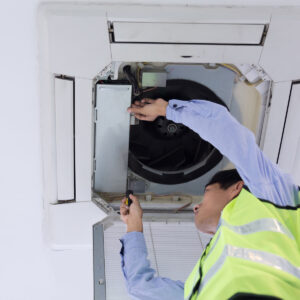Understanding Urologic Surgery & Endourology
Urologic surgery and endourology are essential branches of medicine that focus on diagnosing and treating conditions affecting the urinary tract and reproductive organs. Urologic surgery covers a wide range of procedures that help restore function and health to organs like the kidneys, bladder, urethra, and prostate. Endourology, on the other hand, refers to minimally invasive techniques that use small cameras and instruments to treat internal urologic problems through natural body openings or tiny incisions. These procedures often result in faster recovery times, less pain, and reduced hospital stays. Endourologic methods are now preferred for many patients because they provide excellent outcomes without the long downtime associated with traditional surgery. As technology continues to advance, urologists are now able to use flexible endoscopes, laser treatments, and robotic systems for greater precision and patient safety. This progress has made urologic surgery and endourology vital to modern medical care for both men and women.
Why Urologic Surgery & Endourology Are Essential in Modern Healthcare
In today’s healthcare environment, urologic surgery and endourology play a significant role in managing an increasing number of urinary and reproductive conditions. As people live longer, diseases such as kidney stones, prostate enlargement, and bladder cancer have become more prevalent. The use of minimally invasive urologic surgery has dramatically improved patient outcomes by reducing recovery time and improving precision. Many of these procedures can now be performed on an outpatient basis, allowing patients to return home the same day. The advancement of laser technology, robotic assistance, and 3D imaging has revolutionized how surgeons treat delicate urologic tissues. These improvements not only reduce risks but also enhance long-term results and patient satisfaction. The emphasis on patient-centered care ensures that each individual receives a tailored treatment plan to meet their unique needs, leading to a better quality of life.
Kidney-Related Conditions Commonly Treated
The kidneys are vital organs responsible for filtering waste and maintaining the body’s balance of fluids and minerals. When they are affected by disease or blockage, urologic surgery and endourology often provide effective solutions. One of the most common issues treated is kidney stones, also known as renal calculi. These stones can cause severe pain, infection, and obstruction if left untreated. Procedures such as ureteroscopy and laser lithotripsy are highly effective for breaking down and removing stones without open surgery. Additionally, kidney cysts and tumors can be managed through laparoscopic or robotic-assisted techniques, which allow surgeons to remove abnormal growths with minimal damage to surrounding tissues. The precision of these methods helps preserve kidney function while offering faster recovery times. For patients with recurring kidney problems, regular endoscopic evaluations help prevent complications and maintain long-term health.
Bladder Conditions Managed Through Urologic Surgery & Endourology
The bladder plays a crucial role in storing and releasing urine, but it is also prone to conditions that can disrupt daily life. Urologic surgery and endourology provide effective treatments for common bladder issues such as stones, obstructions, and tumors. Bladder stones often form when urine becomes concentrated, leading to crystal buildup that causes pain and infection. Endoscopic procedures like cystolitholapaxy allow surgeons to remove stones without major incisions, making recovery quicker and less painful. Bladder cancer is another major condition managed with these techniques. Tumors can be precisely removed through transurethral resection, a minimally invasive method that helps preserve bladder function. In addition to these treatments, ongoing surveillance with cystoscopy allows for early detection of recurring conditions. Patients benefit from shorter hospital stays, reduced discomfort, and better long-term outcomes thanks to advancements in endourologic technology.
Prostate Conditions and Their Surgical Treatments
The prostate gland can develop several conditions that affect urinary flow and reproductive health. One of the most common is benign prostatic hyperplasia (BPH), a noncancerous enlargement that causes symptoms such as difficulty urinating, weak urine stream, and frequent nighttime urination. Urologic surgery and endourology offer several options to treat this, including the transurethral resection of the prostate (TURP), which removes excess tissue using a resectoscope. Modern laser therapies such as Holmium Laser Enucleation of the Prostate (HoLEP) provide an even less invasive solution, minimizing bleeding and shortening recovery. For prostate cancer, robotic-assisted surgery allows unparalleled precision, reducing complications and improving preservation of surrounding nerves and tissues.
Common advantages include:
- Improved urinary flow and symptom relief
- Lower risk of infection and blood loss
- Shorter hospital stays and faster return to normal activities
- Enhanced accuracy through robotic and laser technology
- Long-term improvement in quality of life
These innovations demonstrate how endourology continues to transform prostate care, offering effective solutions with minimal discomfort.
Ureter and Urethra Disorders
Disorders affecting the ureter and urethra can severely impact urinary function and comfort. Ureteral strictures, often caused by scar tissue or injury, can block urine flow and lead to kidney damage. Through endourologic techniques, urologists can perform dilation procedures or insert stents to restore normal drainage. Similarly, urethral strictures can cause pain, difficulty urinating, and infection. Minimally invasive surgical repair and endoscopic techniques are highly effective in restoring function while minimizing trauma to surrounding tissues. Patients often experience a rapid recovery and significant symptom improvement. Regular follow-up using endoscopic imaging helps ensure that these conditions are managed before they worsen. These procedures highlight how precision-based urologic surgery continues to evolve in addressing complex urinary tract disorders safely and efficiently.
Pediatric and Female Urologic Conditions
Urologic surgery and endourology are not limited to adults—they are also vital in treating children and women with specific urinary health issues. Pediatric urology focuses on congenital problems such as urinary obstructions, vesicoureteral reflux, and undescended testicles. Minimally invasive surgery has become the standard approach for these conditions because it causes less pain and ensures faster recovery for young patients. Female urology, on the other hand, addresses issues like urinary incontinence, pelvic organ prolapse, and recurrent urinary tract infections. Using endoscopic and laparoscopic methods, surgeons can correct these conditions effectively while preserving natural anatomy. Specialized expertise in female urology ensures accurate diagnosis and safe, comfortable treatment options. These advances empower both children and women to regain confidence and improve their quality of life through personalized, minimally invasive care.
Benefits of Minimally Invasive Techniques in Urologic Surgery & Endourology
The shift toward minimally invasive surgery has brought remarkable benefits to urologic care. Patients experience reduced postoperative pain, smaller scars, and quicker returns to daily activities. Hospital stays are significantly shorter, and the risk of infection is lower compared to traditional open surgery. The precision offered by robotic-assisted and laser technologies enhances the surgeon’s ability to target diseased tissues while preserving healthy structures. These innovations also provide clearer visualization during surgery, leading to improved accuracy and safety. Minimally invasive urologic surgery demonstrates that advanced technology can go hand in hand with compassionate, patient-focused care. As a result, patients not only heal faster but also enjoy better long-term outcomes and satisfaction with their treatment.
Preparing for a Urologic Procedure
Before undergoing a urologic or endourologic procedure, patients should be well informed about what to expect. Preparation often involves a thorough evaluation that includes physical examination, blood tests, and imaging studies such as ultrasound or CT scans. Understanding the procedure helps reduce anxiety and improves recovery outcomes. Patients are usually advised to adjust medications, avoid certain foods, or fast before surgery. Postoperative care instructions may include hydration guidelines, wound care, and activity restrictions to ensure proper healing.
Helpful tips for patients include:
- Ask your urologist about available surgical options and their benefits
- Follow all preoperative and postoperative instructions carefully
- Arrange transportation and support for the day of the procedure
- Keep a list of medications and allergies ready for your care team
- Maintain open communication with your healthcare provider during recovery
Proper preparation and aftercare significantly enhance the success of urologic surgery and ensure a smooth healing process.
Emerging Trends in Urologic Surgery & Endourology
The field of urologic surgery and endourology continues to evolve rapidly with the introduction of cutting-edge technologies. Robotic-assisted surgery now allows surgeons to operate with greater precision and control, improving safety and outcomes. Artificial intelligence and advanced imaging techniques help in better diagnosis and surgical planning. Lasers and flexible endoscopes have made procedures even less invasive, reducing complications and recovery time. There is also a growing trend toward outpatient and same-day surgeries, giving patients more comfort and convenience. With ongoing research and innovation, the future of urologic surgery promises even more effective treatments with minimal impact on patients’ lives. These developments highlight how the medical community continues to refine urologic care for better, safer, and faster recovery.
Frequently Asked Questions (FAQ)
1. What is the difference between urologic surgery and endourology?
Urologic surgery is a broad field that includes all surgical treatments for urinary tract and reproductive organ conditions, while endourology focuses on minimally invasive procedures using endoscopic tools to access internal areas without open incisions.
2. Are endourologic procedures painful?
Most endourologic procedures cause minimal discomfort since they use small instruments and are often performed under anesthesia. Patients typically experience quicker recovery and less postoperative pain.
3. How long does recovery usually take after urologic surgery?
Recovery time depends on the type of surgery performed. Minimally invasive and endoscopic surgeries often allow patients to resume normal activities within a few days, while more complex procedures may require a longer recovery period.
4. Are these procedures safe for older adults?
Yes, minimally invasive urologic procedures are considered safe for older adults. They reduce surgical risks and help patients recover more quickly compared to traditional open surgery.
5. How can I know if I need surgery for my urologic condition?
Your urologist will determine if surgery is necessary based on your symptoms, diagnostic results, and response to other treatments. Many conditions can be managed through minimally invasive techniques for better outcomes.
Takeaway
Urologic surgery and endourology represent some of the most advanced fields in modern medicine, offering effective solutions for kidney, bladder, prostate, ureter, and urethral conditions. Through the use of minimally invasive and robotic-assisted techniques, patients benefit from shorter recovery times, reduced pain, and improved outcomes. Whether addressing kidney stones, prostate enlargement, or bladder cancer, these procedures continue to enhance lives by combining innovation with compassionate care.











